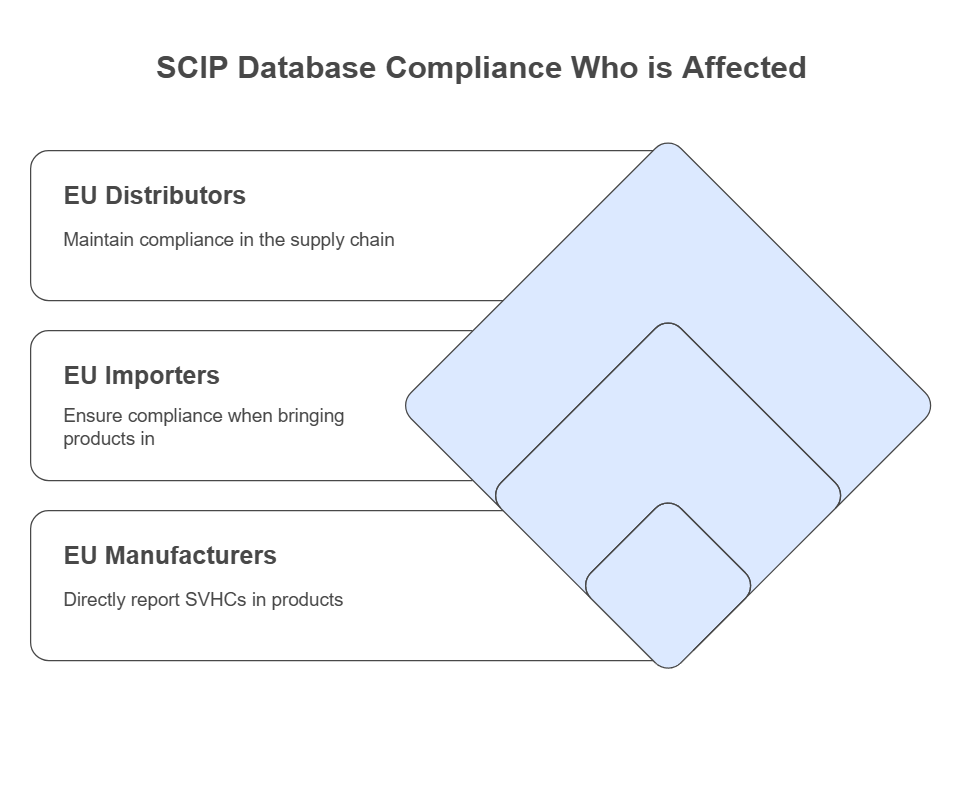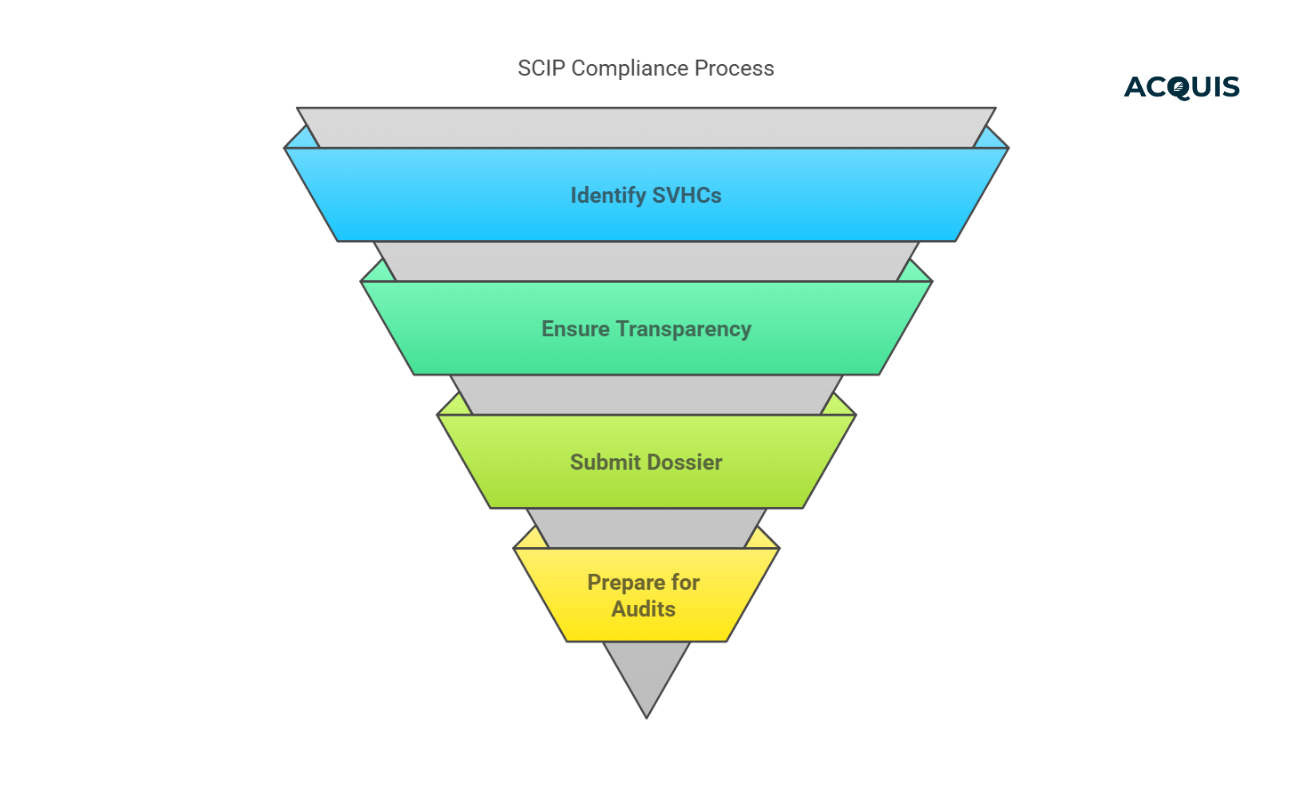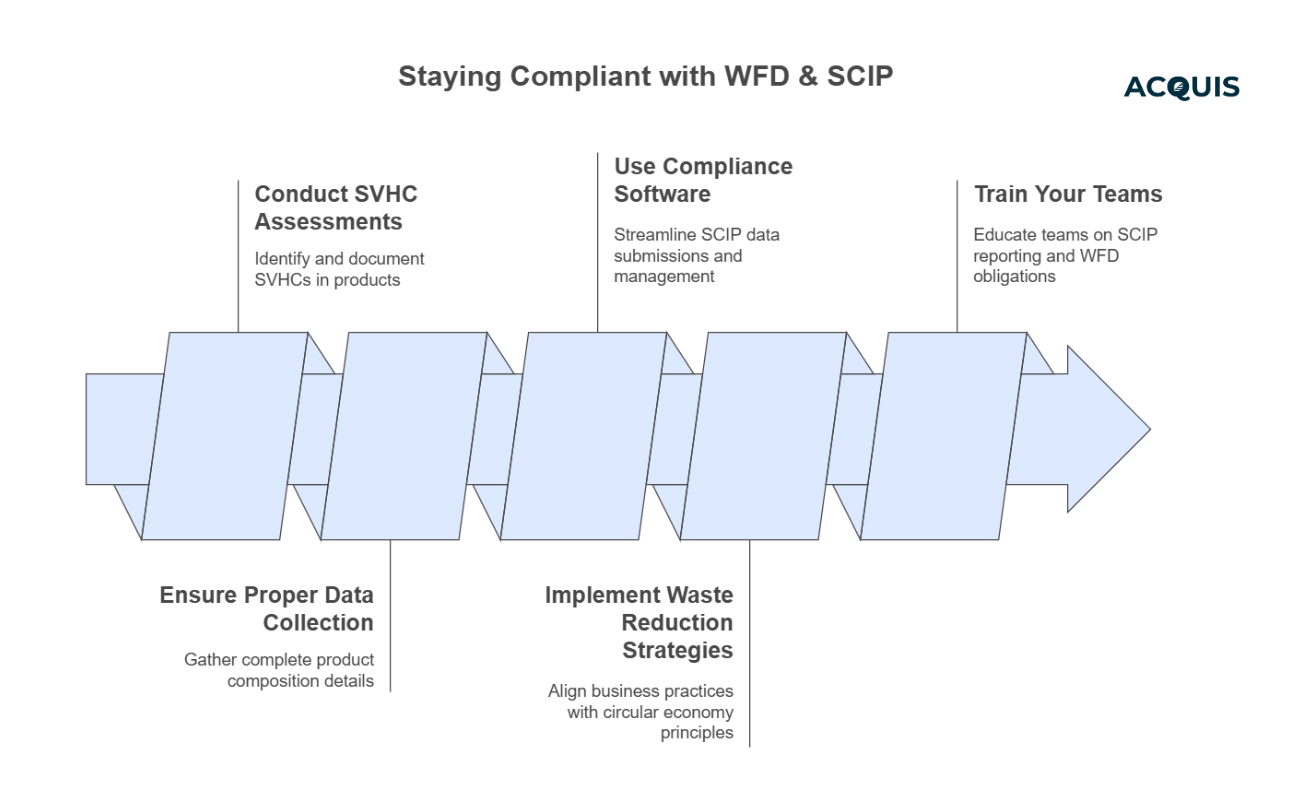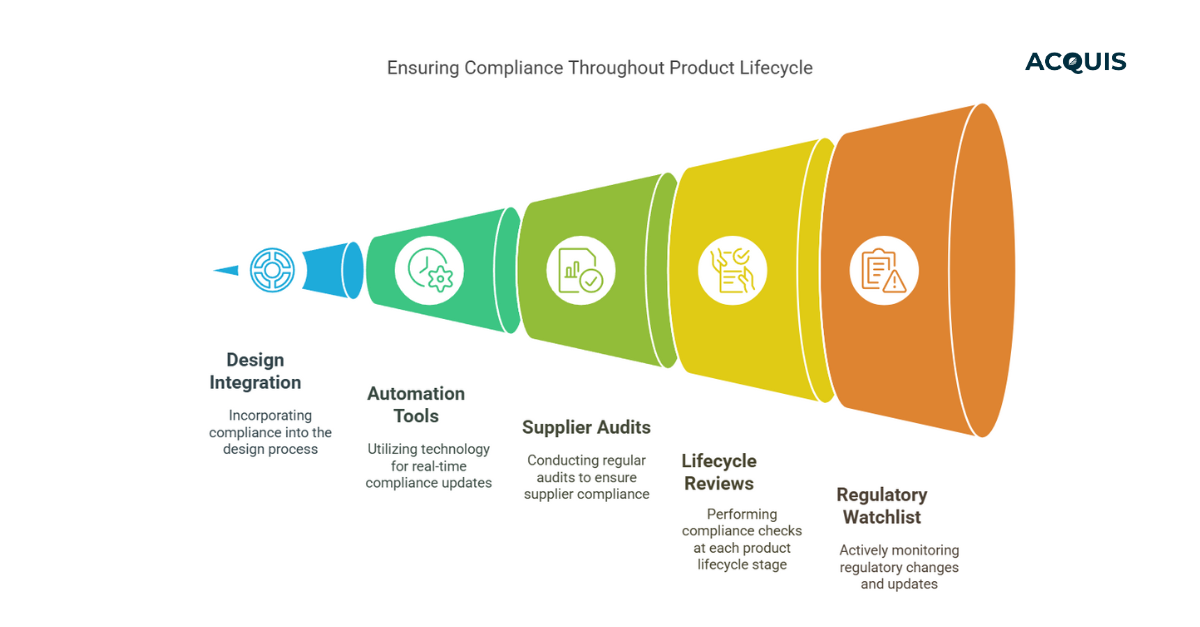Table of Contents
If your business manufactures, imports, or distributes products in the EU market, you need to get serious about compliance with the Waste Framework Directive (WFD) and the SCIP Database. The European Union (EU) is cracking down on waste management, hazardous substances, and sustainability—and non-compliance isn’t an option.
Manufacturers and suppliers must submit critical data on hazardous substances in products, ensure proper waste handling, and implement extended producer responsibility (EPR) strategies to stay ahead. Failure to comply? Expect fines, product bans, and supply chain disruptions.
The EU Waste Framework Directive (WFD): What’s the Big Deal?
The WFD (Directive 2008/98/EC) is the cornerstone of EU waste policy, focusing on waste prevention, resource efficiency, and sustainability. If you manufacture products in the EU, you’re in scope. If you import or distribute goods, you’re in scope. In short: WFD applies to you.
WFD Compliance: Key Requirements
- Waste Prevention – Reduce waste at the source before it becomes an issue.
- Extended Producer Responsibility (EPR) – You are accountable for the entire product life cycle, including disposal.
- Waste Hierarchy Compliance – Prioritize reuse, recycling, and recovery before disposal.
- Hazardous Waste Management – Strict classification, record-keeping, and disposal obligations.
- End-of-Waste Criteria – Define when a waste material can be reclassified as a secondary raw material.

The WFD sets binding recycling targets, requiring EU countries to increase material reuse and recycling rates. It enforces strict rules on hazardous waste management and aims to cut down environmental damage from industrial waste.
Understanding the SCIP Database: The New Compliance Challenge
The SCIP Database (Substances of Concern In articles, as such or in complex products) is the latest compliance hurdle for manufacturers and importers. Introduced under the WFD’s 2021 amendment, SCIP is managed by the European Chemicals Agency (ECHA) and tracks hazardous substances (SVHCs) in products.
SCIP Database Compliance: Who’s Affected?
- EU Manufacturers of Articles – If your products contain SVHCs over 0.1% by weight, you must report.
- EU Importers – Bringing products into the EU? SCIP reporting applies to you.
- EU Distributors – If you're not the original manufacturer or importer but sell products in the EU, you must ensure SCIP compliance.

What’s Required for SCIP Submissions?
- Substances of Very High Concern (SVHC) Data – Identify and report any SVHCs over 0.1% (w/w).
- Product-Level Transparency – Provide clear details on product composition and hazardous substances.
- Dossier Submission – Submit SCIP data before your product hits the EU market.
- Compliance Audits – Be ready for inspections and regulatory reviews from EU authorities.

How SCIP Impacts Your Supply Chain
SCIP isn’t just another database—it’s a game changer for how the EU regulates hazardous materials. The database increases supply chain transparency, making it easier for regulators, recyclers, and consumers to identify products with harmful substances.
Non-compliance? Your products risk being pulled from the EU market.
Key Differences Between WFD and SCIP Database
How to Stay Ahead of WFD & SCIP Compliance
Regulatory enforcement is getting stricter. Here’s how you can avoid penalties and supply chain disruptions:
- Conduct SVHC Assessments – Identify and document any SVHCs over 0.1% (w/w) in your products.
- Ensure Proper Data Collection – Gather complete product composition details from suppliers.
- Use Compliance Software – Automated tools like Acquis Compliance Tool streamline SCIP data submissions and dossier management.
- Implement Waste Reduction Strategies – Align your business with circular economy principles to reduce waste.
- Train Your Teams – Ensure regulatory, supply chain, and compliance teams understand SCIP reporting and WFD obligations.

Non-EU Suppliers: How to Support SCIP Compliance
Non-EU suppliers are not required to report directly to SCIP, but your EU customers depend on you for compliance. Here’s how to help them:
- Provide Full Material Declarations (FMDs) – Ensure accurate composition data is available.
- Assist in SVHC Identification – Work with EU importers to disclose hazardous substances.
- Substitute Hazardous Materials – Seek SVHC-free alternatives to minimize compliance risks.
The Cost of Non-Compliance: Why You Need to Act Now
Ignoring WFD and SCIP obligations isn’t an option. EU regulators are increasing scrutiny, and non-compliance can lead to:
- Hefty fines & legal penalties
- Product bans in the EU market
- Supply chain disruptions
- Reputational damage & loss of customer trust
Acquis Compliance Tool: Your Solution for SCIP & WFD Compliance
Navigating WFD and SCIP compliance doesn’t have to be complicated. Acquis Compliance Tool offers:
- Automated SCIP dossier preparation & submission
- SVHC data tracking & supplier collaboration tools
- Real-time compliance monitoring & alerts
Need help with SCIP reporting? We’ve got you covered. Contact us today and ensure your business stays compliant in the evolving EU regulatory landscape.
Final Thoughts: Act Now, Stay Compliant, and Lead in Sustainability
The EU’s regulatory landscape is evolving fast, and proactive compliance is the only way forward. The Waste Framework Directive and SCIP Database reporting are not just about avoiding fines—they’re about future-proofing your business. Get ahead of the curve, streamline compliance, and demonstrate leadership in sustainability.



